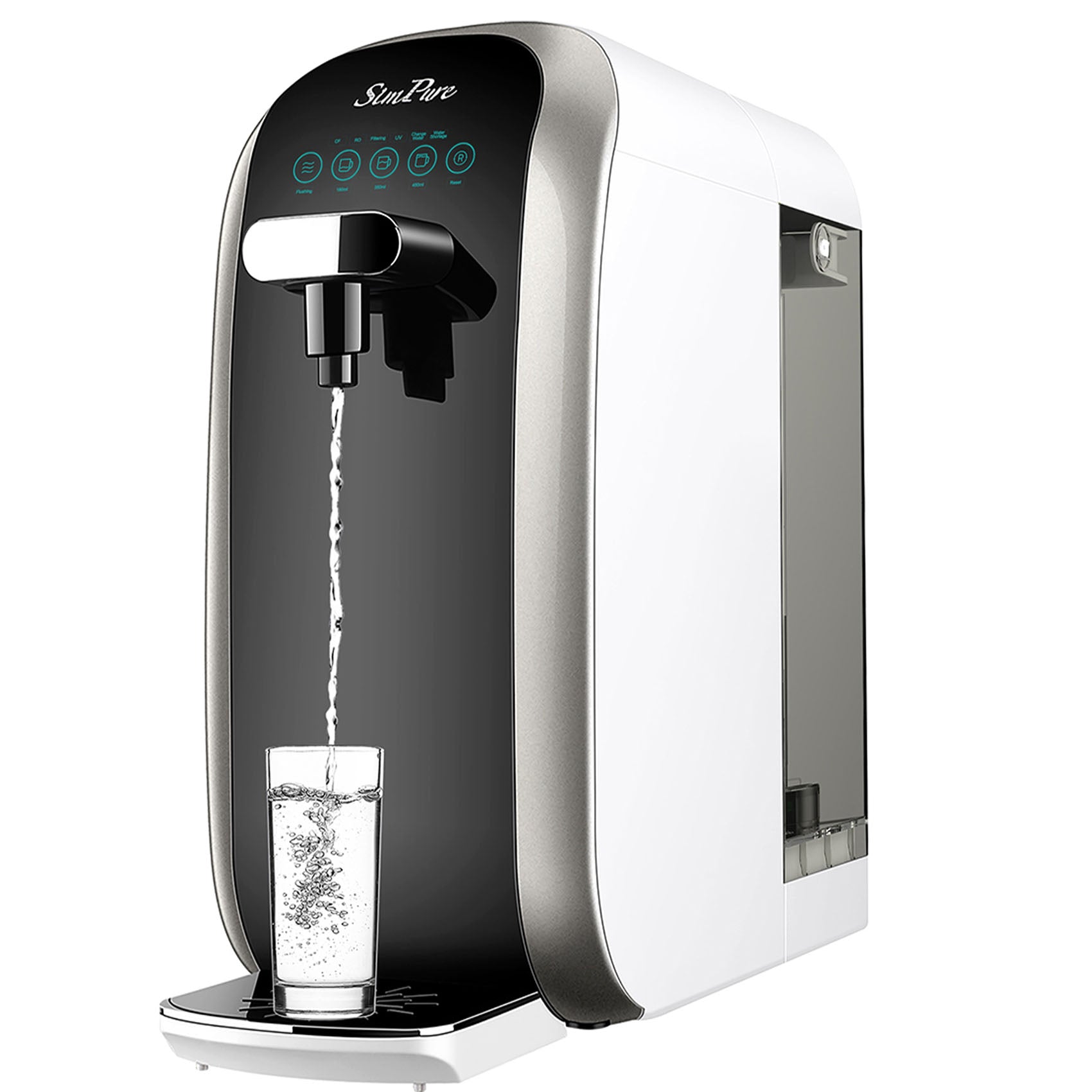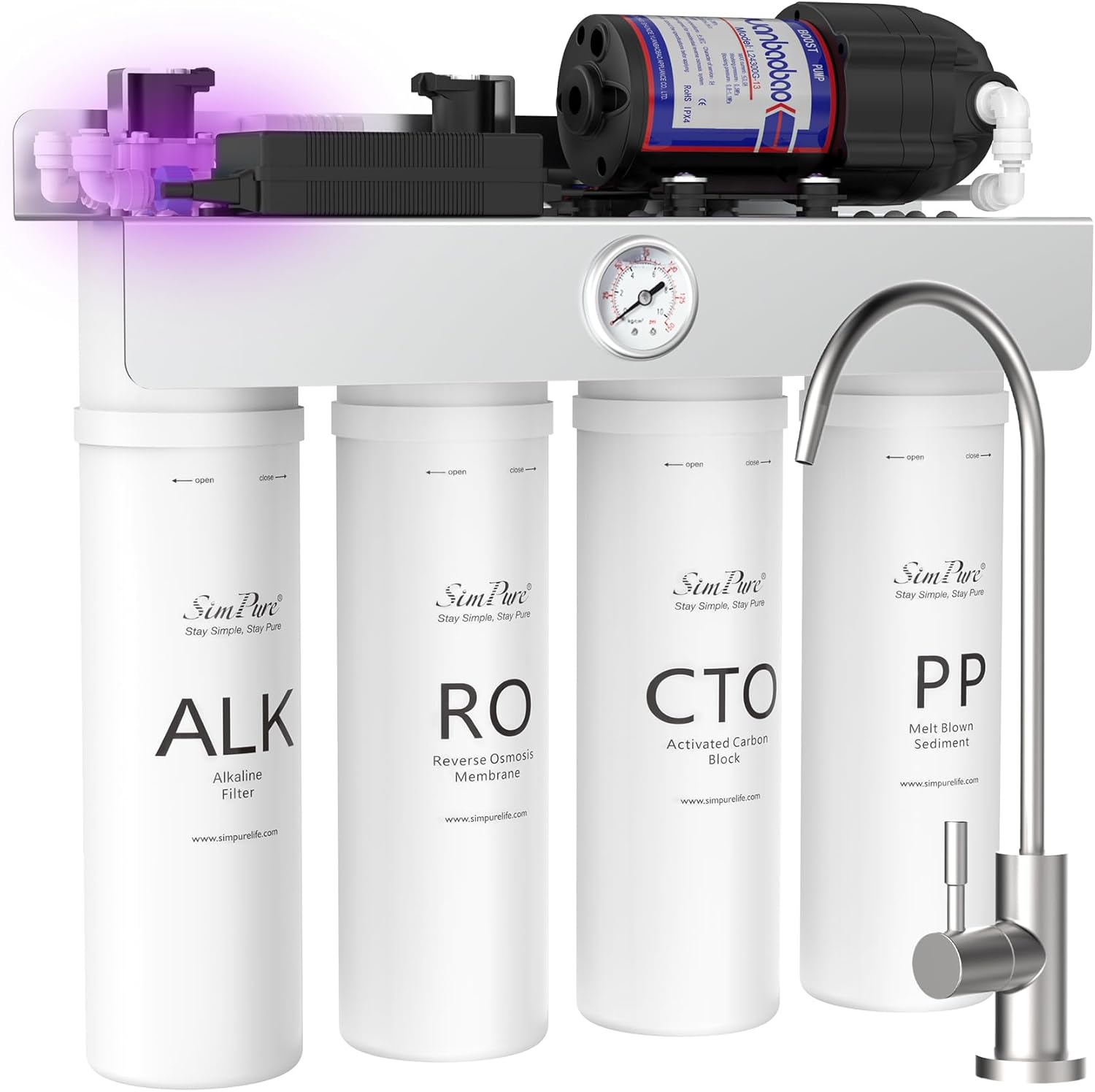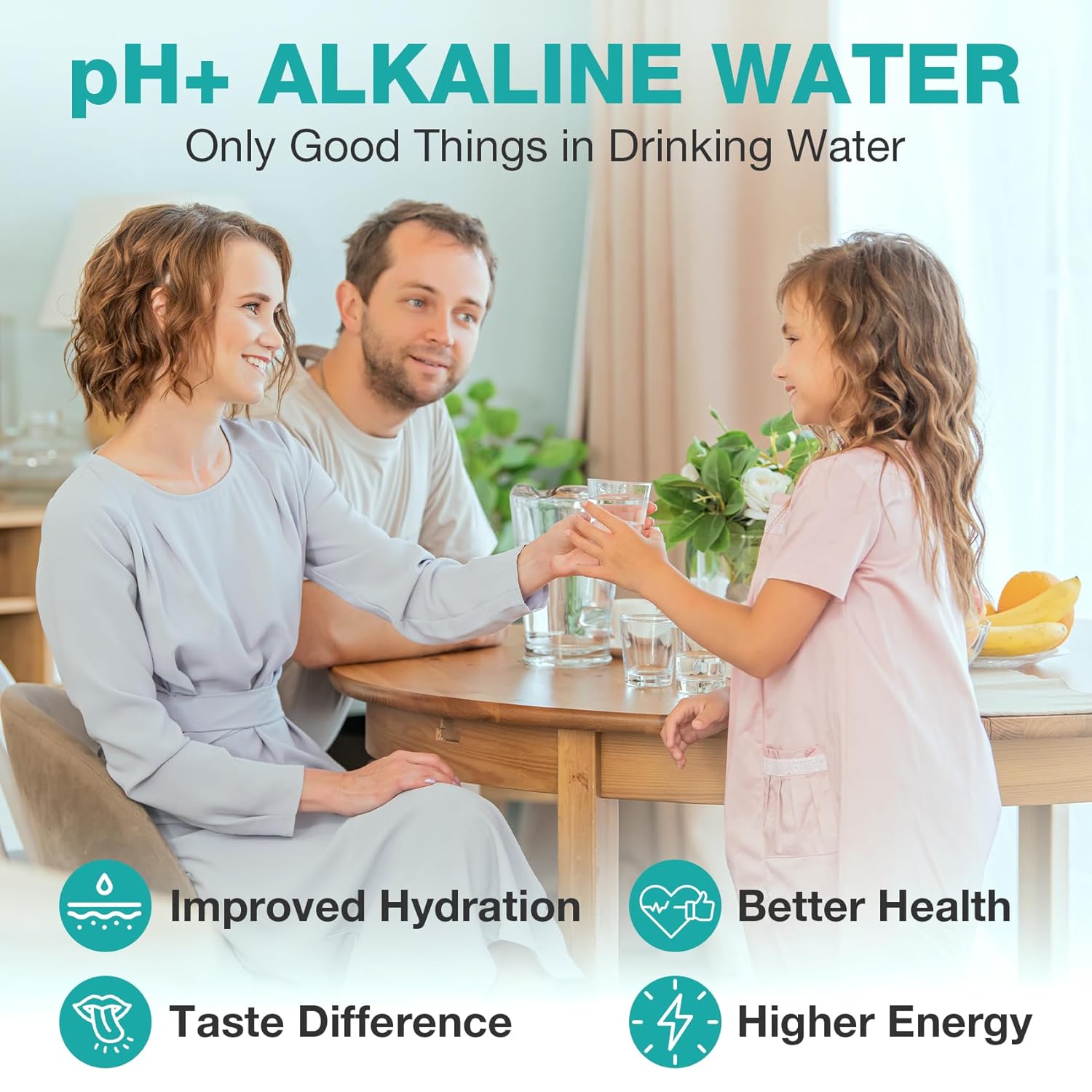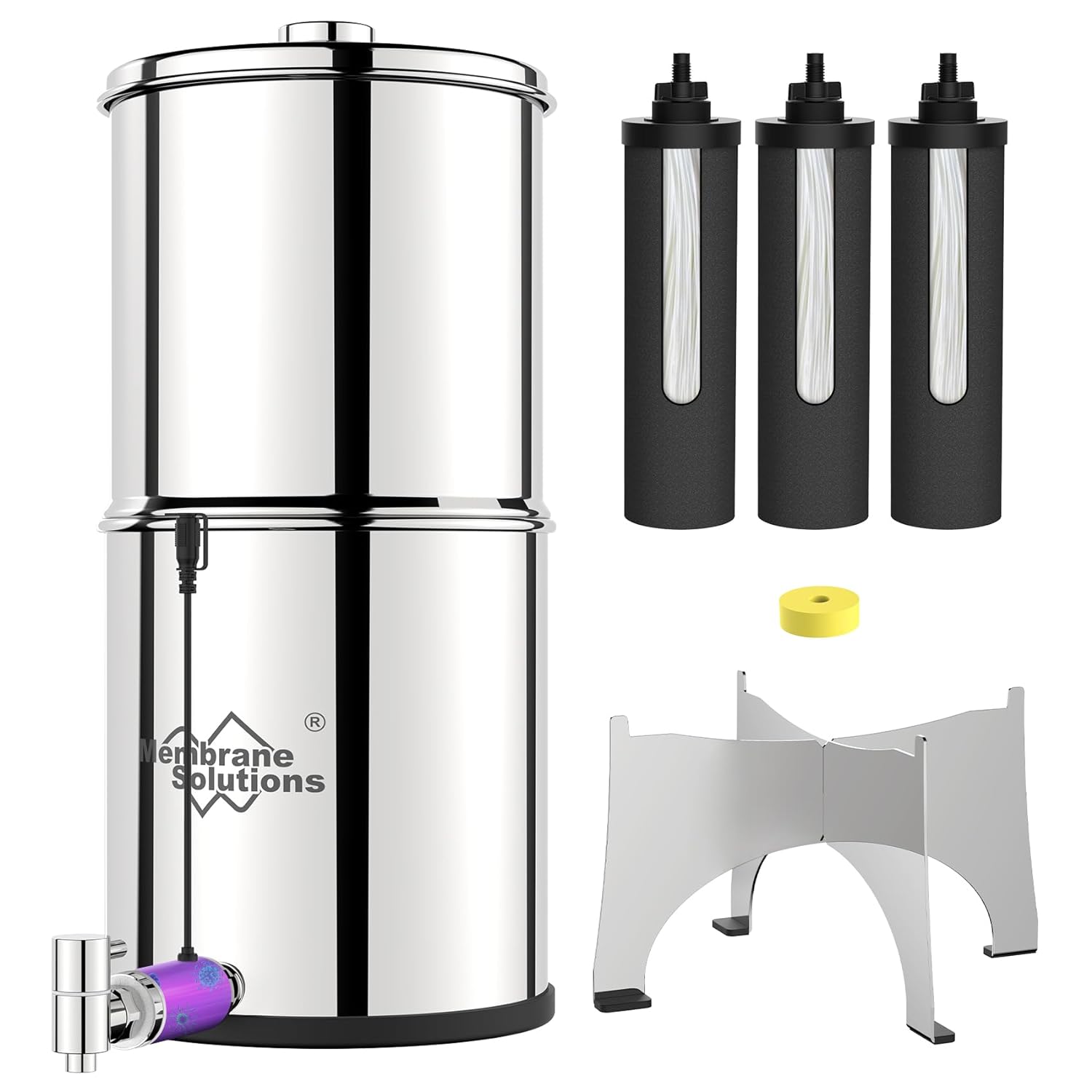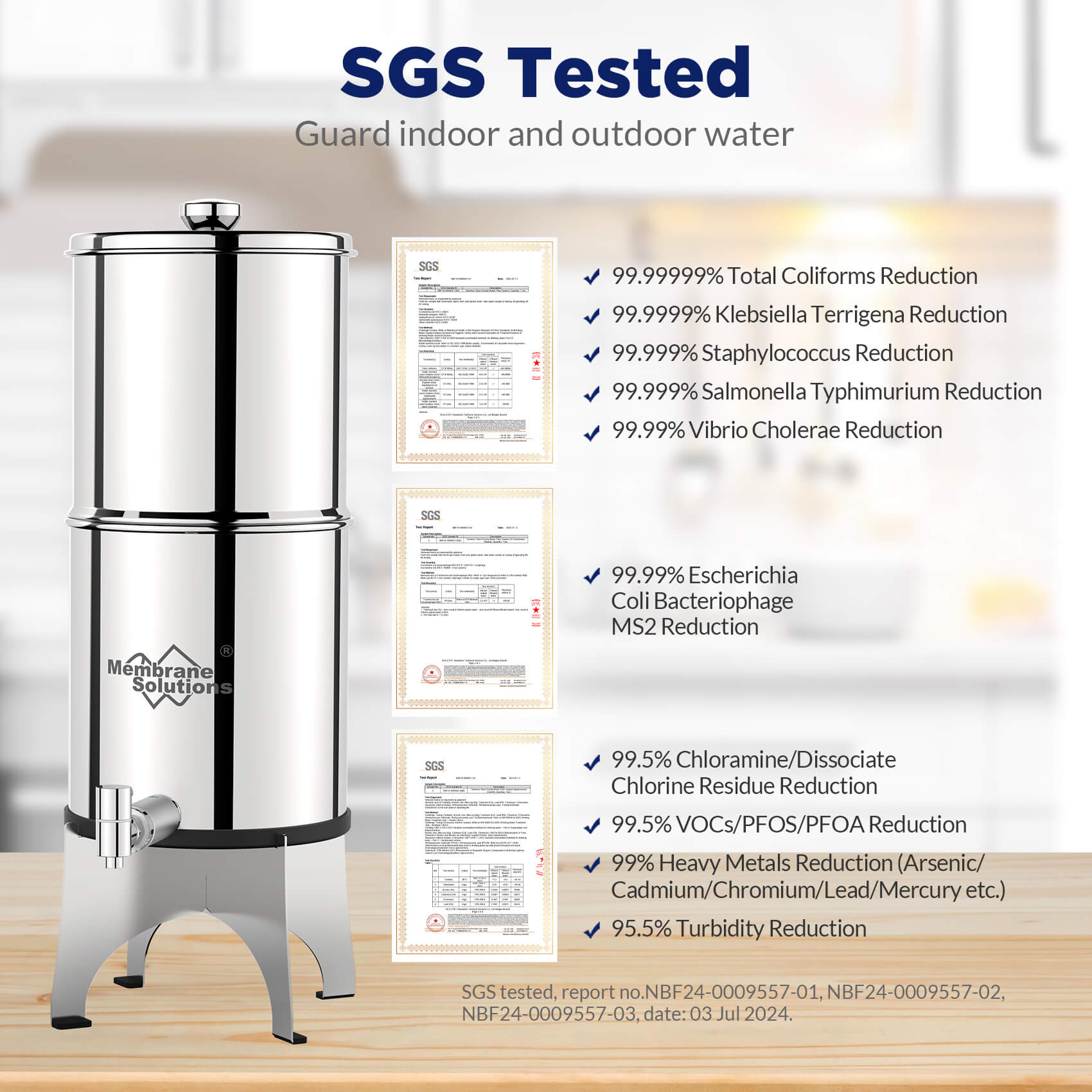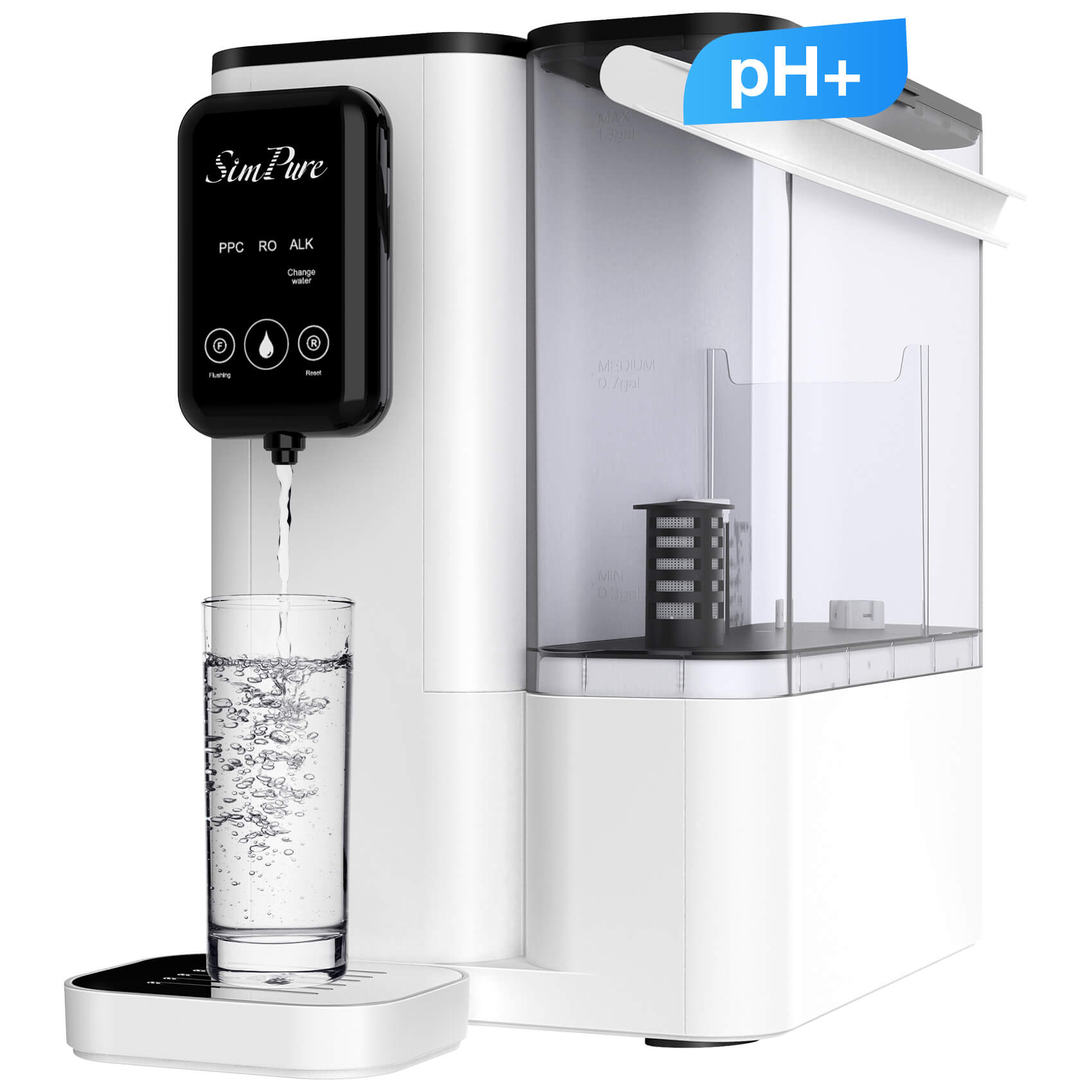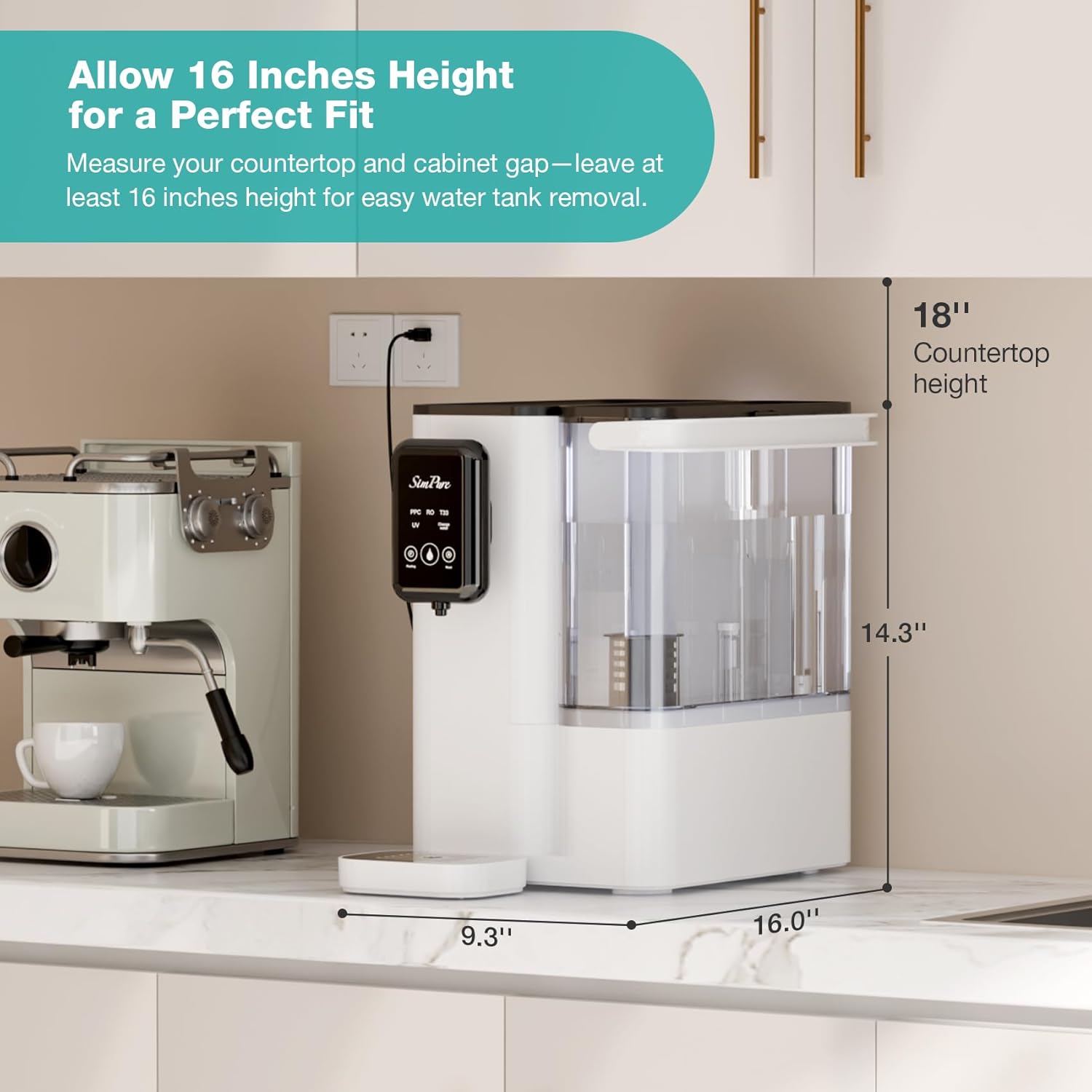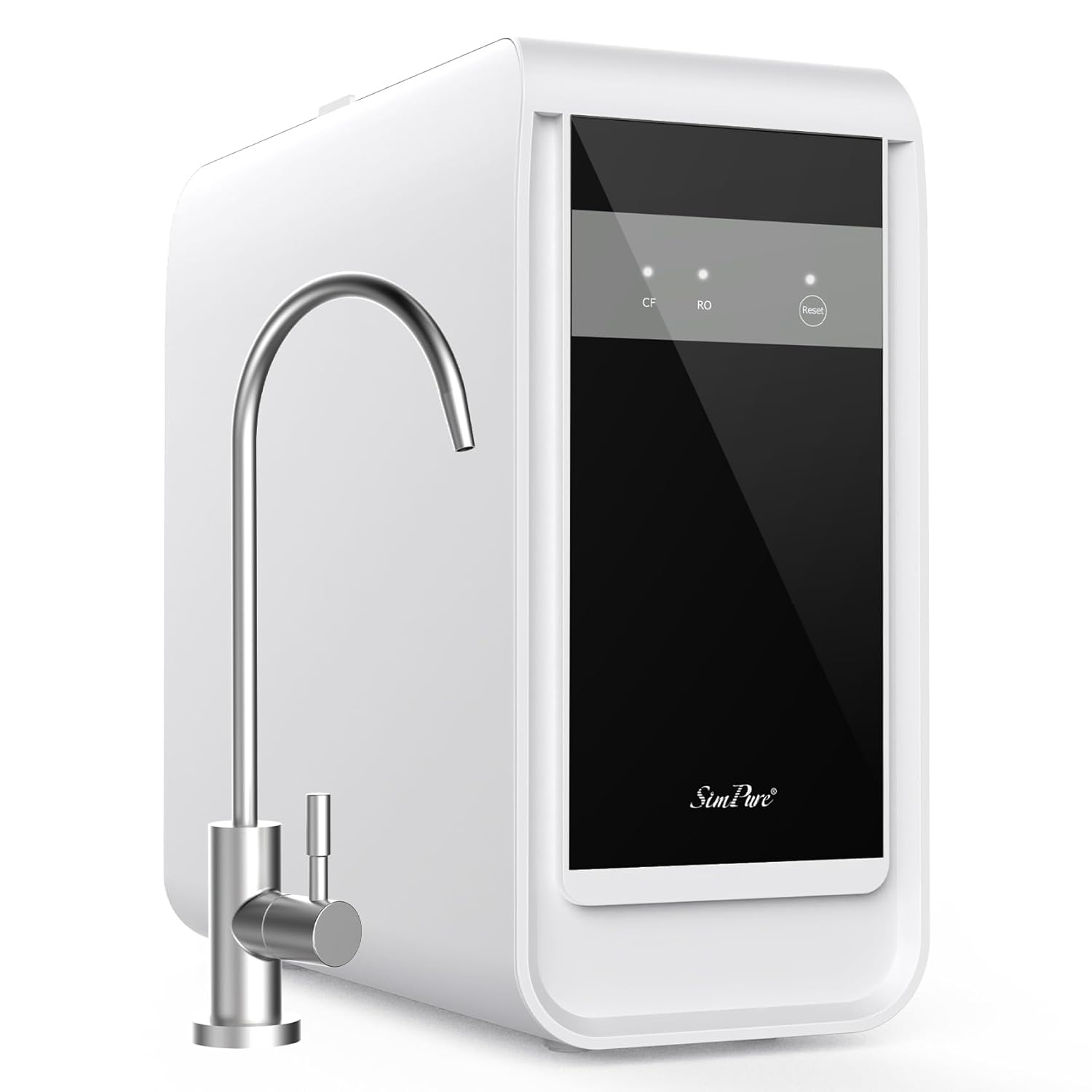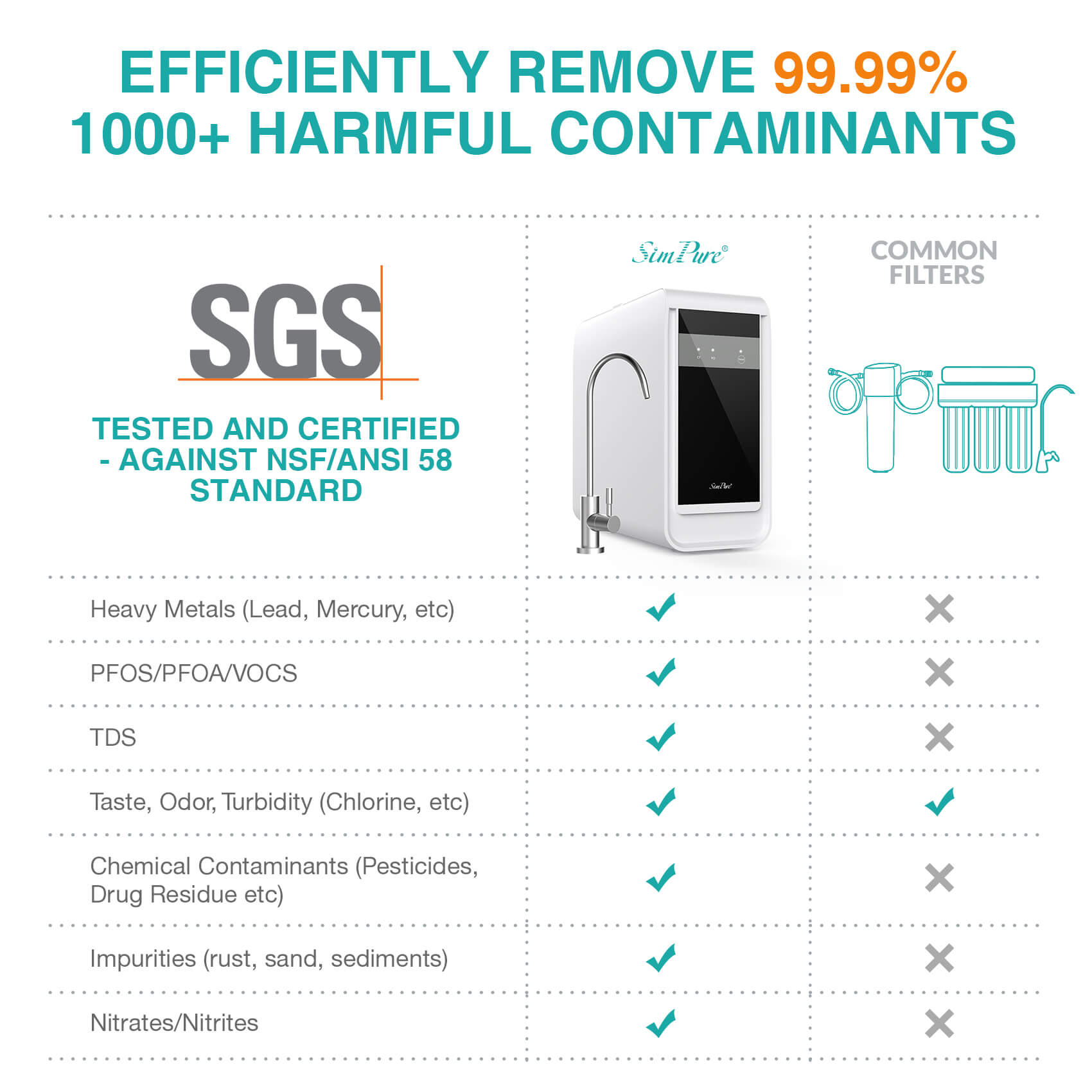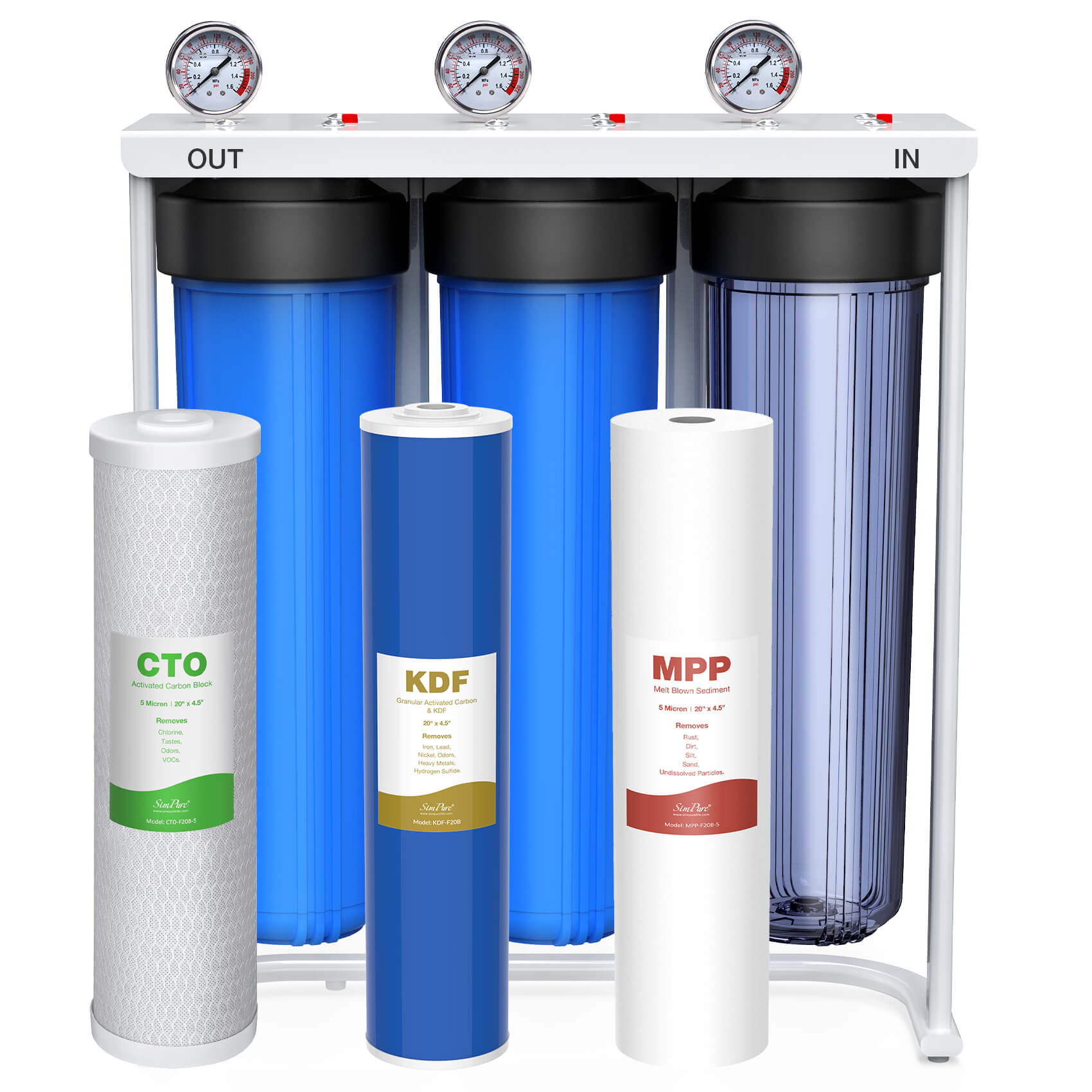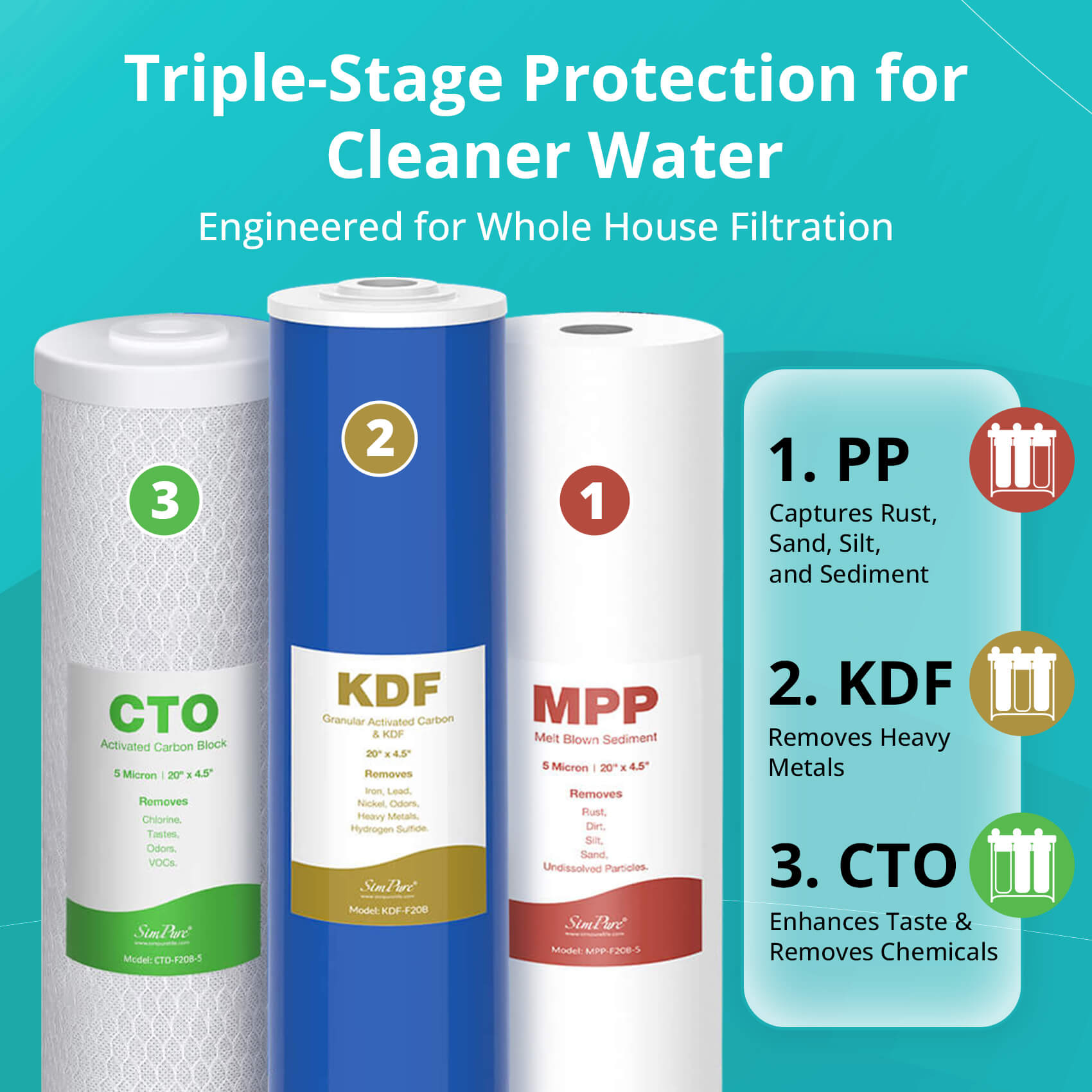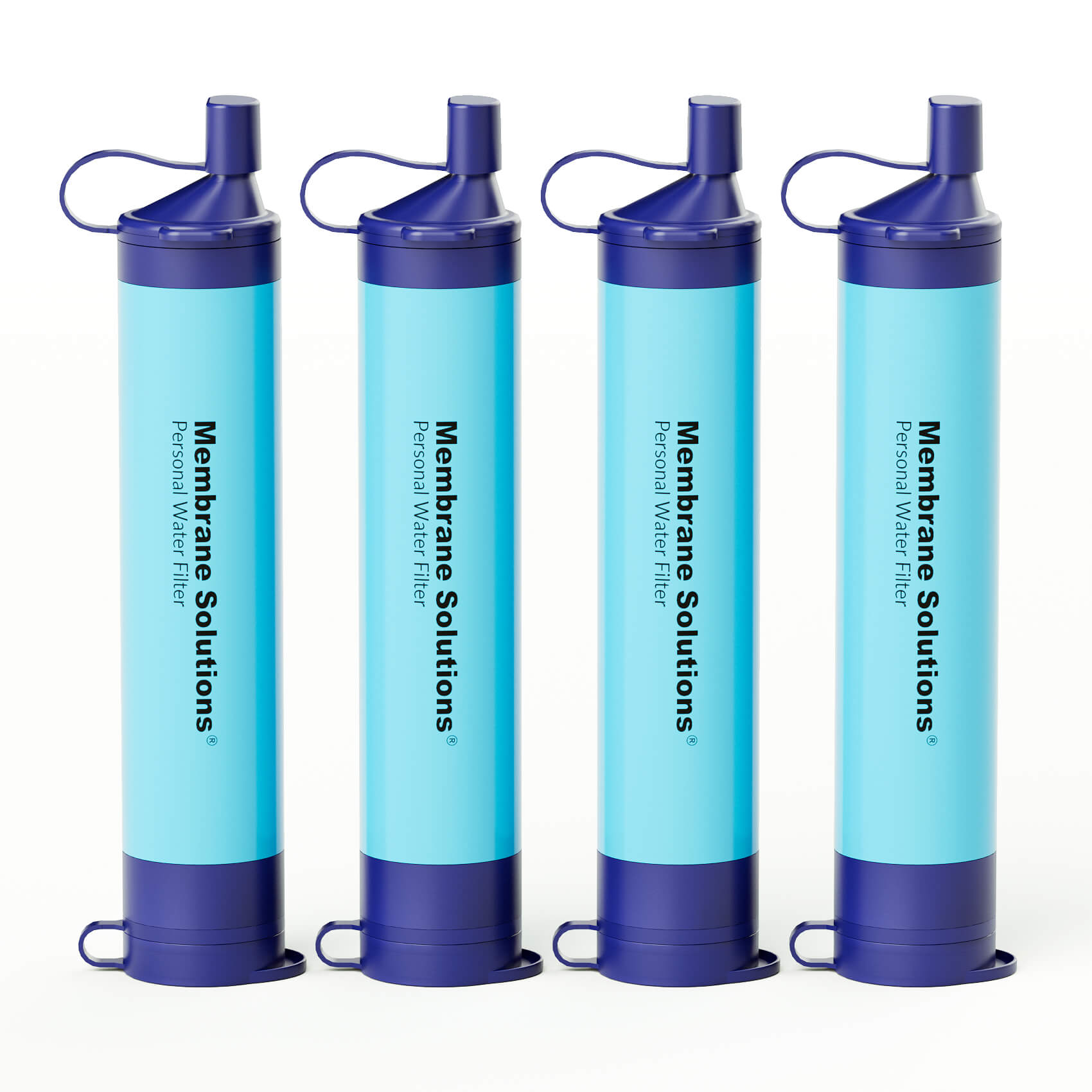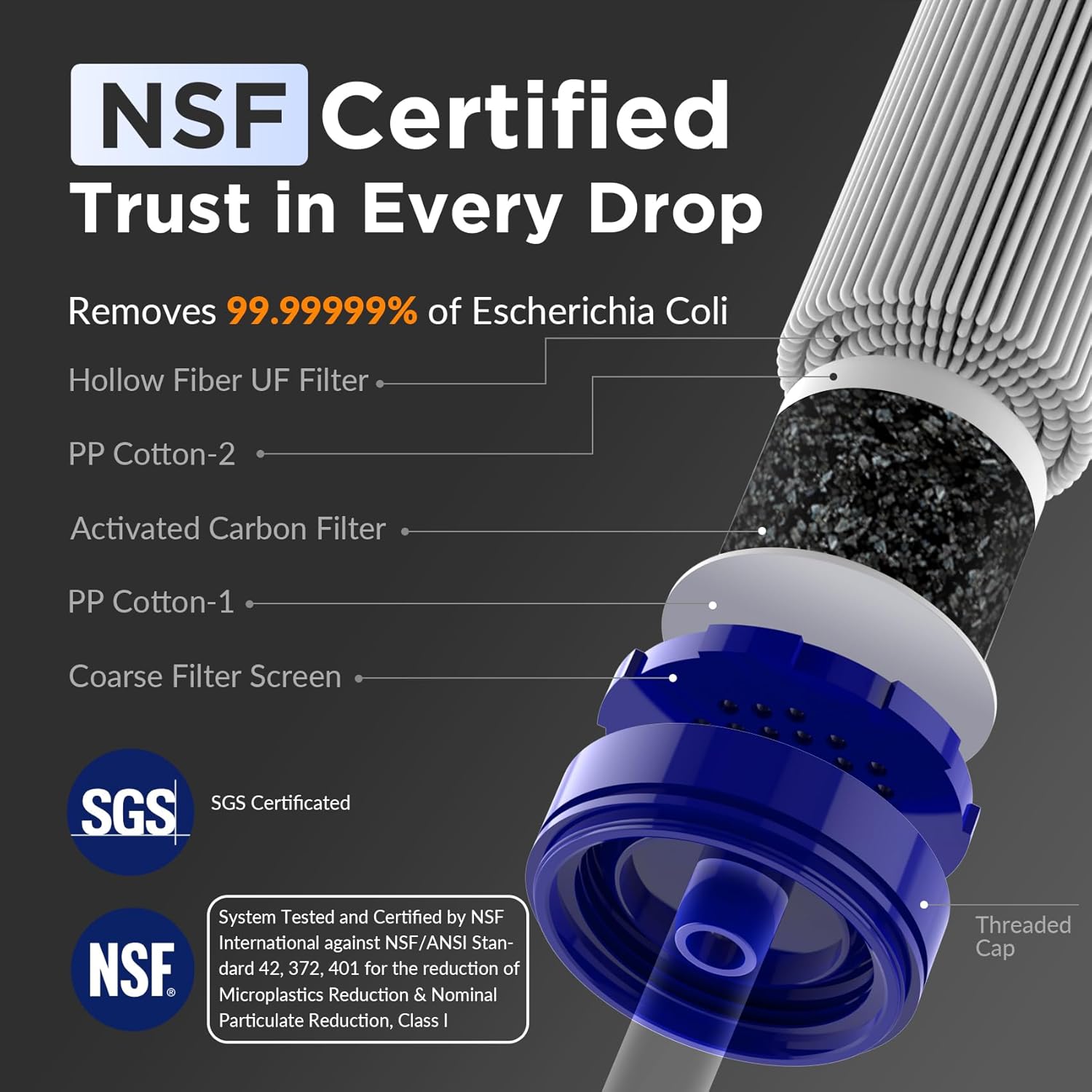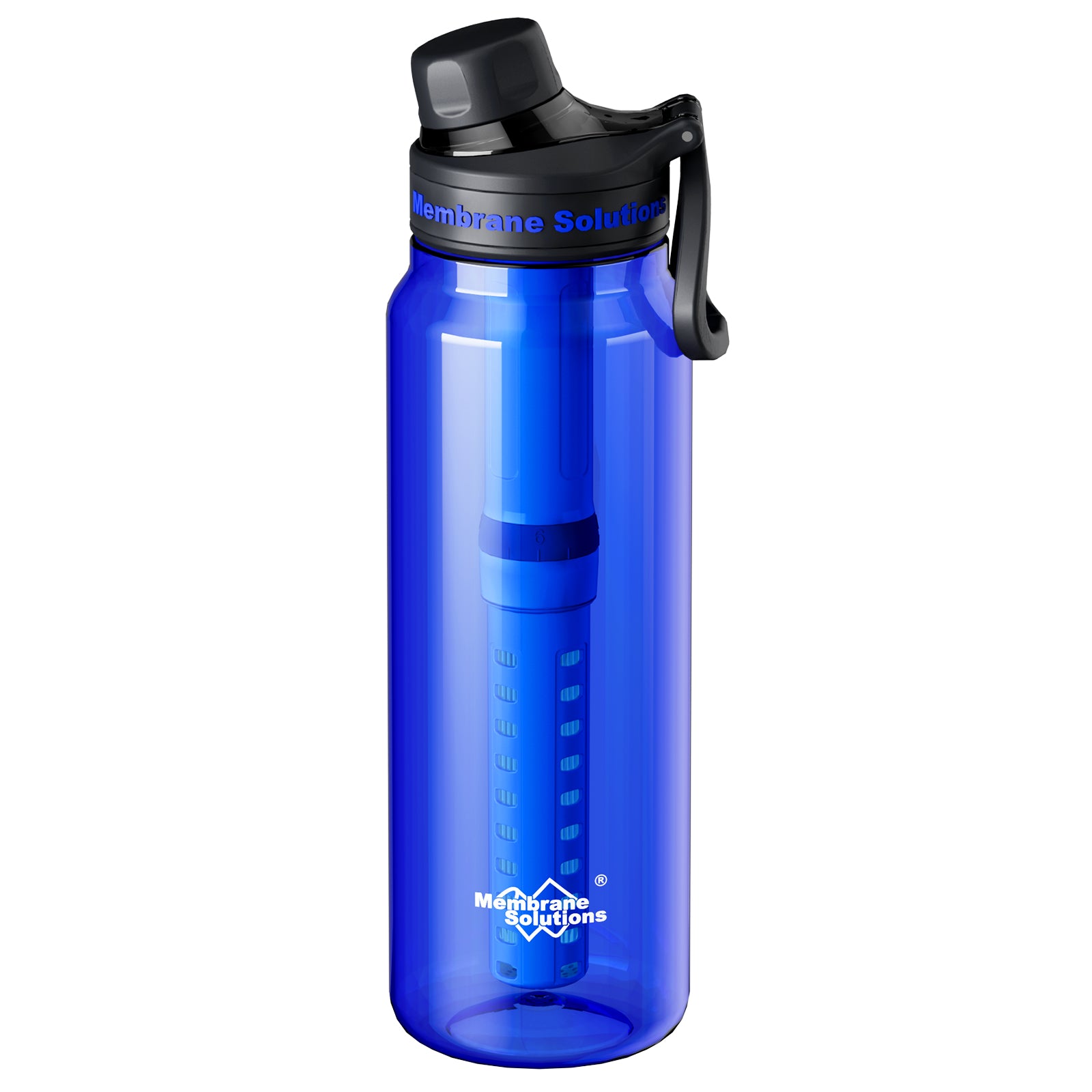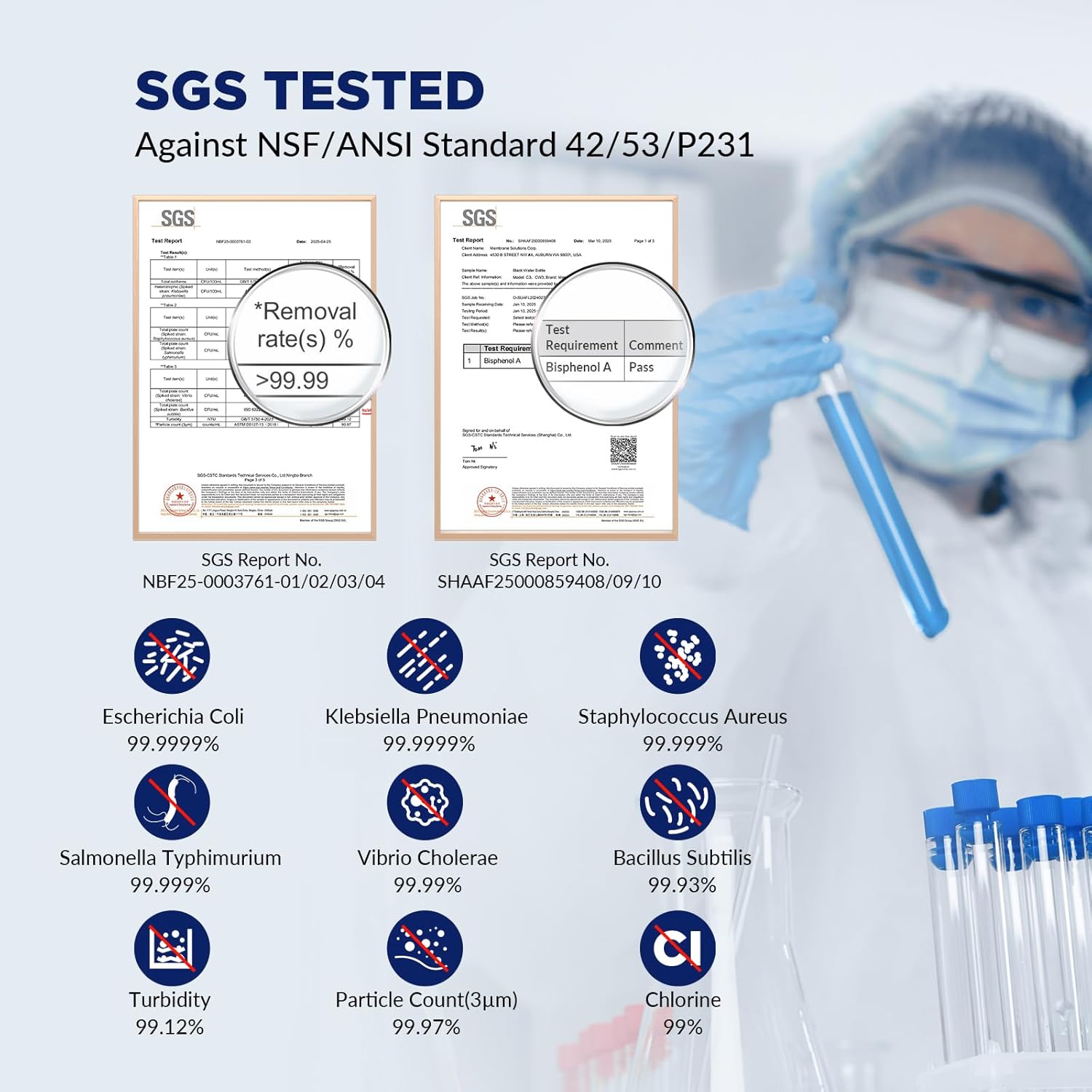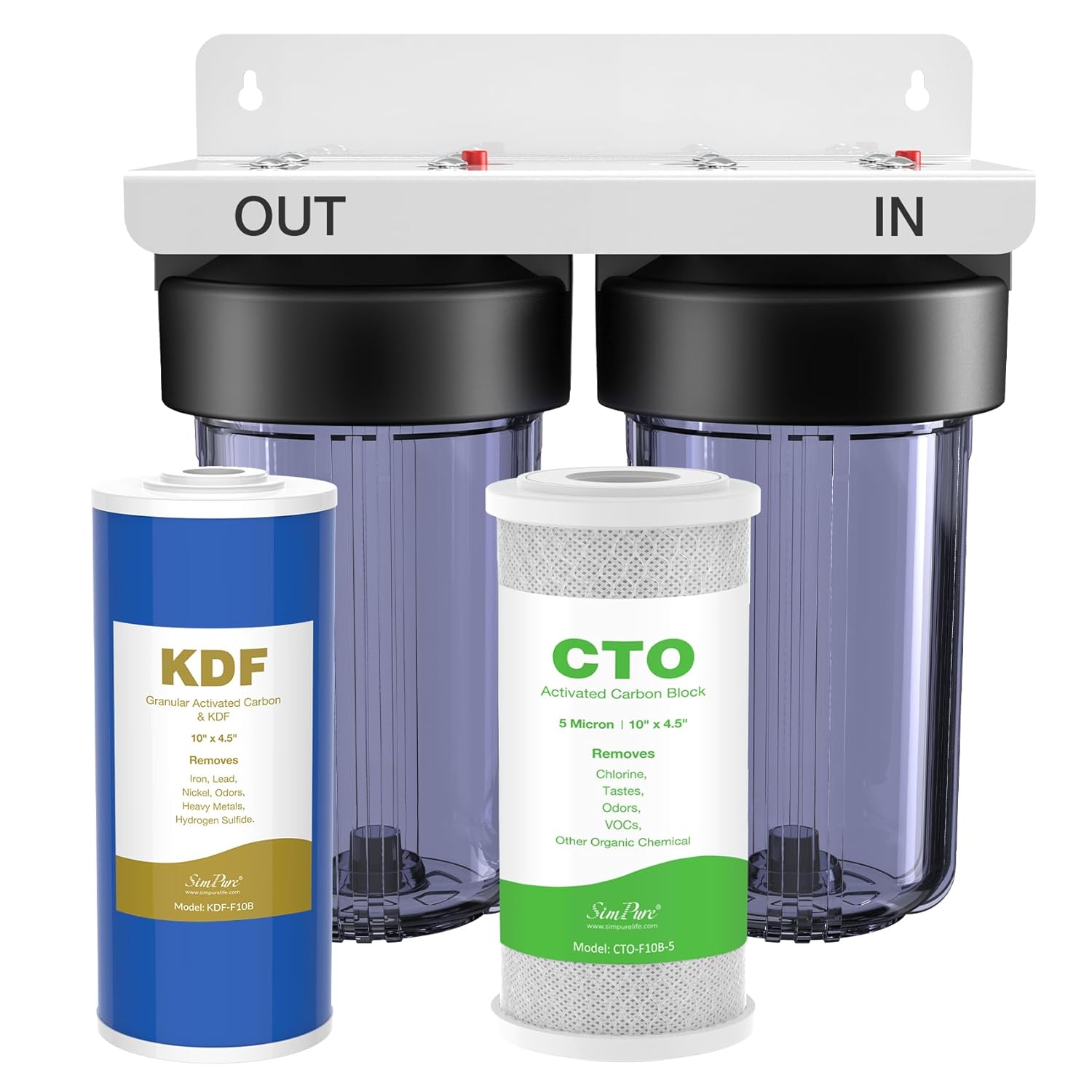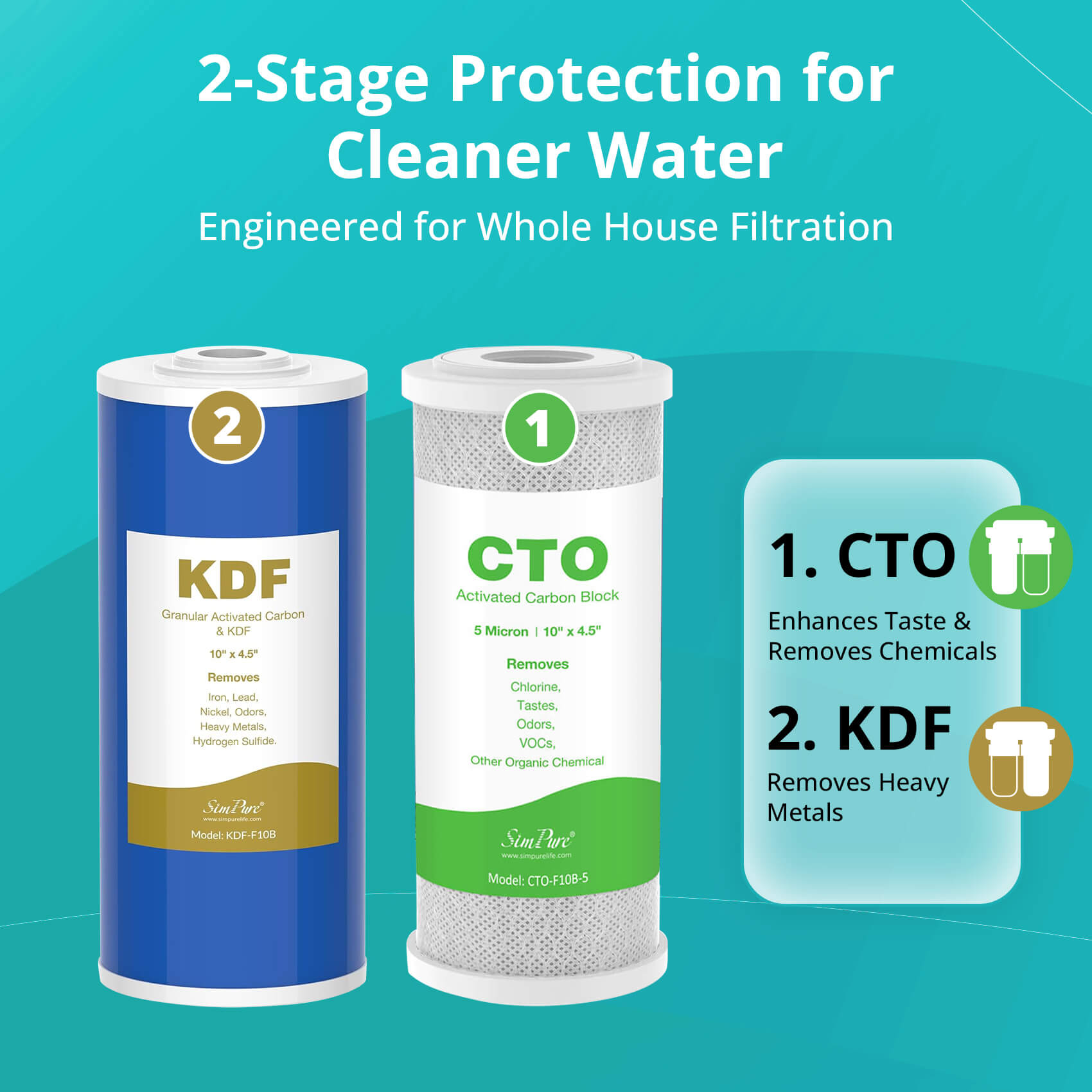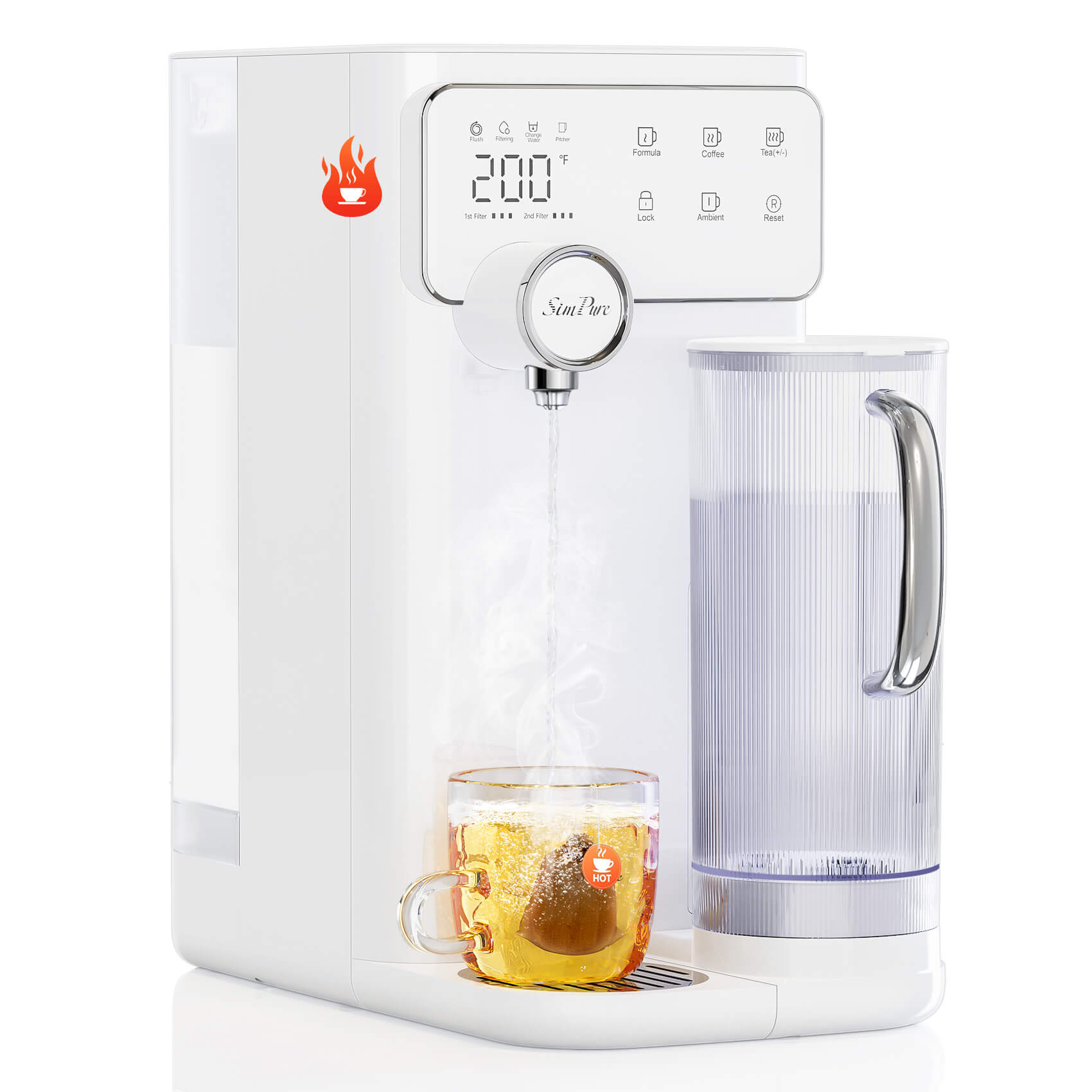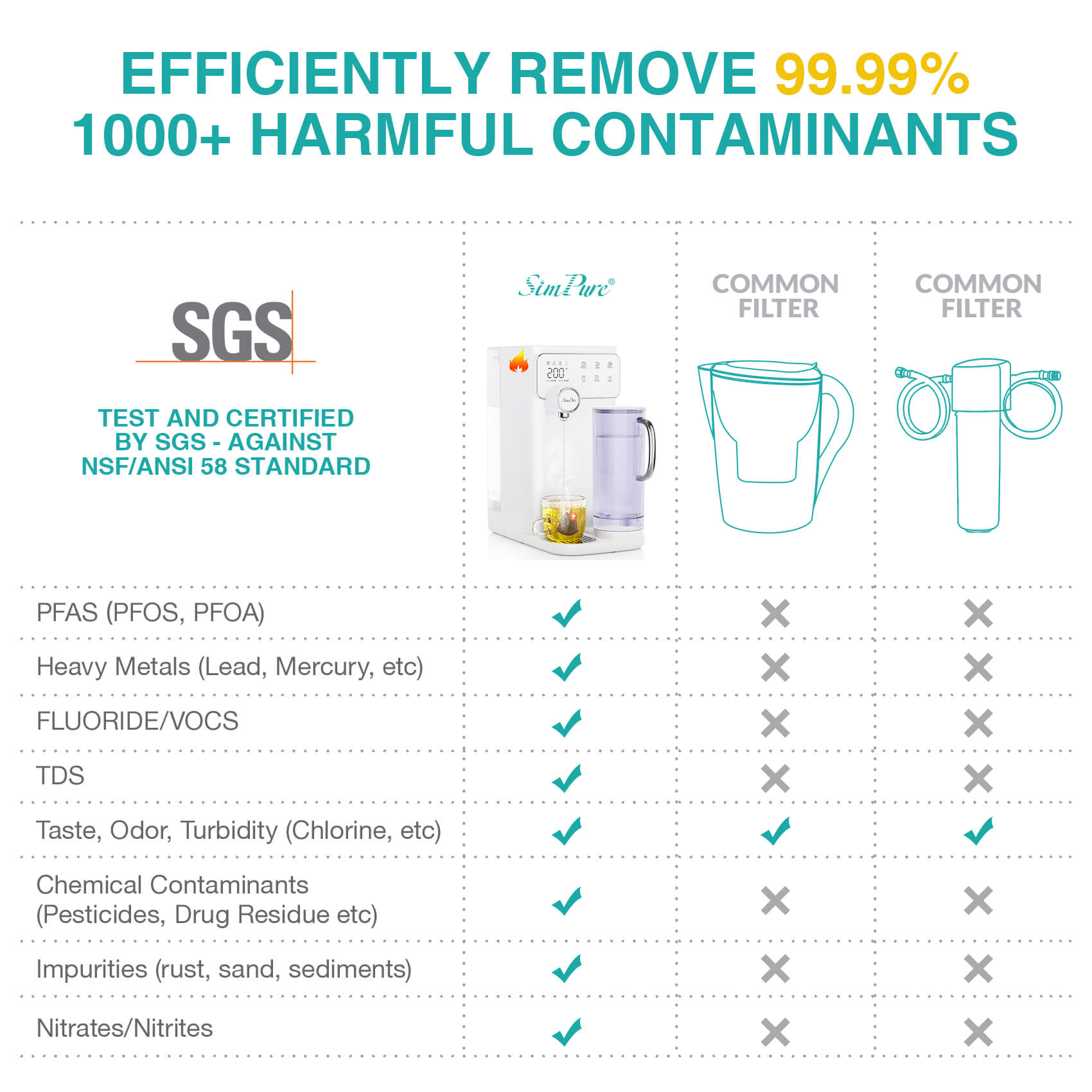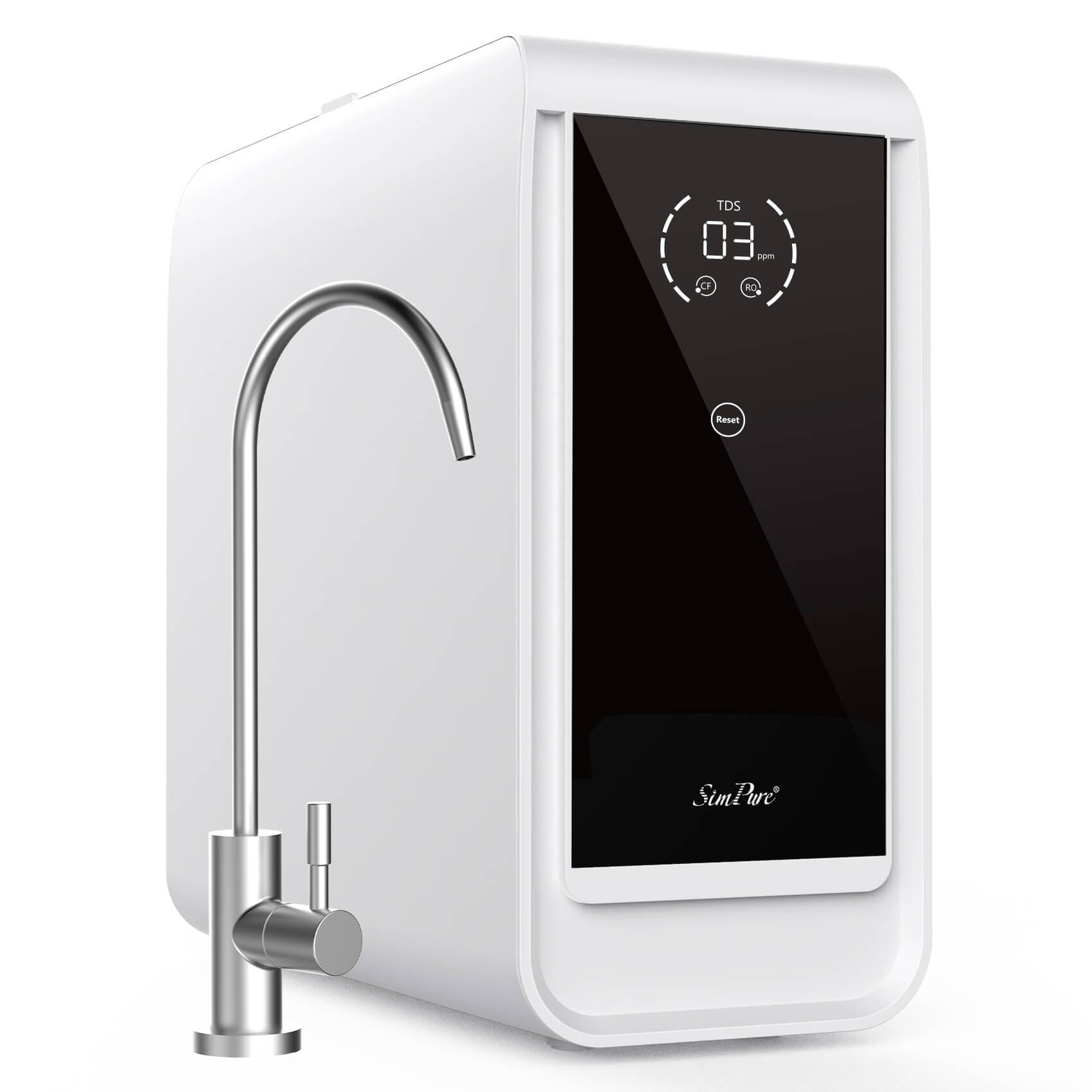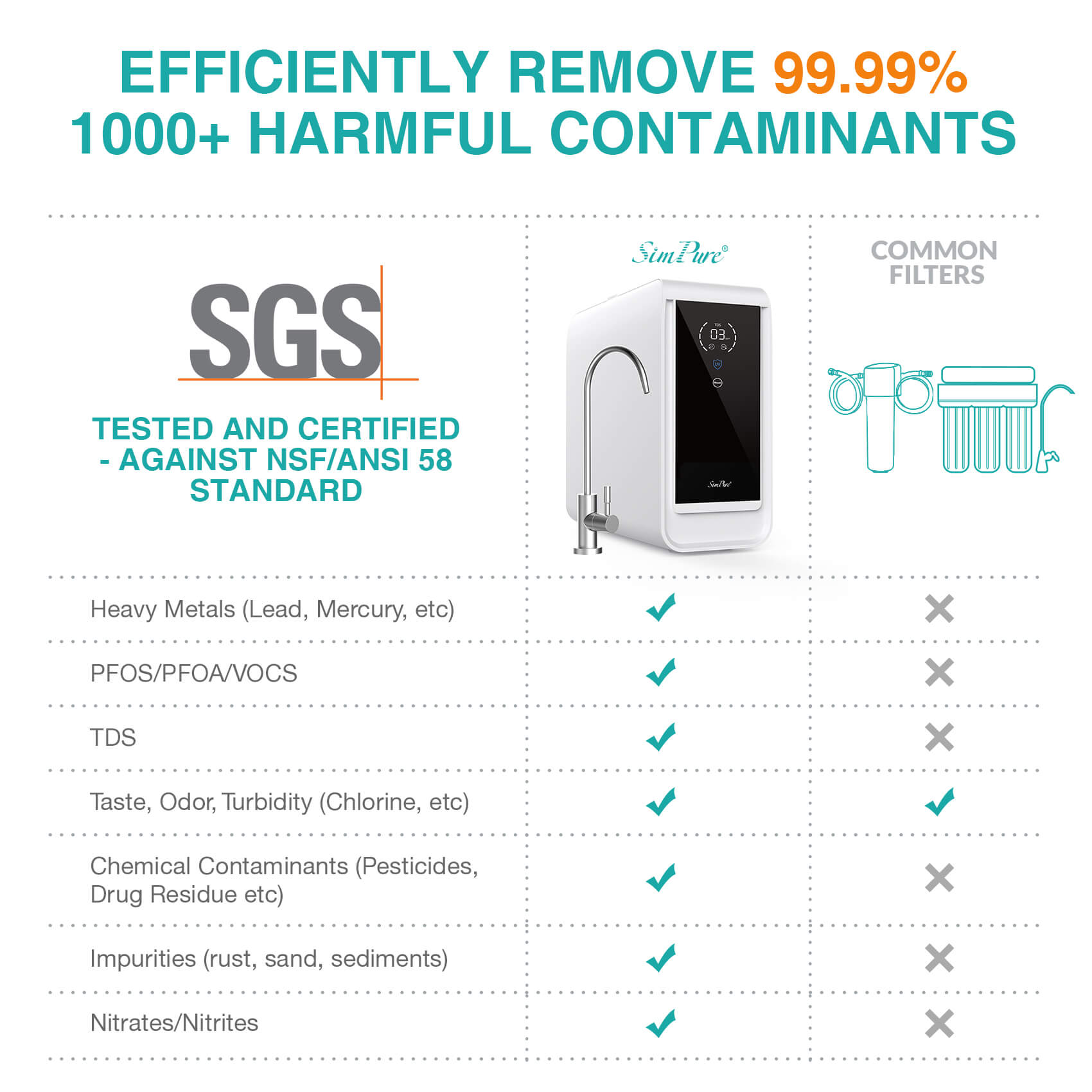As more and more people are realizing the importance of safe drinking water, water purifiers have become an indispensable part of many family life to improve the quality of drinking water for families. However, in the face of hundreds of water purification equipment and thousands of product models on the market, how to select the water filter suitable for you, and how to choose which water filter should I buy? Consumers are often unable to start. So, how to choose a water purifier? And what kind of water purifier is really suitable for home?
To make your decision easier, we've gathered insights from health experts and SimPure water purification engineers to guide you in selecting the ideal water filter for your home.
1. Choose a Water Purifier Based on Filtration Effectiveness

1.1 Filtration Technology and Levels
The filtration membrane determines water quality. The two main types are:
-
RO Membrane (Reverse Osmosis):
Uses a semipermeable membrane with a pore size of approximately 0.0001 microns, effectively removing up to 99% of dissolved solids, heavy metals (like lead, mercury, and arsenic), bacteria, viruses, and other contaminants. This ensures the highest level of water purity, making it ideal for areas with poor water quality or concerns about harmful pollutants.
-
Ultrafiltration Membrane:
Features a pore size of around 0.01 microns, allowing it to filter out larger contaminants such as bacteria, sediment, and some viruses while retaining beneficial minerals like calcium and magnesium. UF is a great choice for regions with relatively clean water but concerns about microbial contaminants and particulates.
Water purifiers often feature multi-stage filtration (e.g., three-stage, five-stage, or seven-stage). More stages generally mean better purification. Learn more in this blog: https://www.simpurelife.com/blogs/blogs/uf-membrane-vs-ro-membrane-difference-between-reverse-osmosis-and-ultrafiltration.
1.2 Filter Element Type
-
Modular Filter Element: Designed for convenience, modular filter elements allow quick, tool-free replacement. They minimize maintenance efforts, making them ideal for users who prefer hassle-free upkeep. These filters often come pre-assembled, reducing the risk of installation errors. However, they may have a higher initial cost compared to universal options.
-
Universal Filter Element: A cost-effective choice, universal filter elements fit multiple brands and models, offering flexibility. They require manual replacement, which can be more time-consuming. Users with DIY skills can save on maintenance costs by replacing them independently. While affordable, they may not always provide the same performance consistency as branded options.
-
Brand RO Membrane: Known for superior filtration, branded RO membranes effectively remove contaminants like heavy metals, bacteria, and dissolved solids. They ensure consistent water purity and long-term reliability. Though more expensive, they often have longer lifespans and better efficiency. Ideal for those prioritizing water safety and high-performance filtration.
1.3 Water Output & Wastewater Ratio
-
Water Flow Rate: A water purifier's flux determines how quickly it produces clean water. A 400G+ model ensures a steady flow of at least 1 liter per minute, meeting daily needs without long waits. Higher flux means faster water output, making it ideal for families. Choosing a high-flux purifier ensures convenience and reduces waiting time.
-
Wastewater Ratio: The pure-to-wastewater ratio affects efficiency and sustainability. A 1.5:1 ratio means for every 1.5 liters of purified water, only 1 liter is wasted. This balance prevents excessive water loss while keeping the RO membrane clean for longer use. Selecting a model with an optimal wastewater ratio saves water and reduces utility costs.
1.4 UV Sterilization
UV sterilization is crucial for preventing bacterial growth inside the water purifier. Over time, bacteria multiply rapidly, contaminating filtered water. A built-in UV sterilization system eliminates 99.999% of bacteria and viruses, ensuring safe drinking water. It works by using ultraviolet light to disrupt microbial DNA, preventing reproduction. Choose purifiers with UV sterilization for added safety.
2. Choose Based on Local Water Quality
2.1 Areas with Good Water Quality
-
For drinking water, an all-in-one water purifier with basic filtration is enough to remove chlorine, odors, and common contaminants while preserving minerals.
- For kitchen use, an under-sink sediment filter with 0.01μm accuracy effectively removes rust, sand, and larger particles. It improves water clarity and taste while retaining beneficial minerals for cooking and drinking.

2.2 Areas with Poor Water Quality
-
High chlorine & odor: Choose a purifier with more activated carbon.
-
Heavy metals: Use an RO purifier for thorough purification.
-
Hard water: Install a water softener before the purifier to prevent scaling.
3. Consider Maintenance Costs
Filter replacement costs affect long-term expenses. Check:
-
Replacement frequency of each filter element.
-
Annual cost evaluation based on filter lifespan.
4. Choose Based on Design & Installation
4.1 Size & Space Compatibility
Measure installation space before purchasing. If space is limited, opt for a compact or tankless model.
4.2 Internal Design
-
Integrated Waterway Design: Reduces leakage risks.
-
Tankless Design: Prevents stagnant water and secondary pollution.
5. Brand & After-Sales Service
5.1 Recognized Brands
Well-established brands invest in research and quality control. Check the brand’s credibility online.
5.2 After-Sales Support
Regular filter replacement is necessary. Choose a brand with reliable customer service and easy access to replacement parts.
5.3 R&D Capability
Brands with in-house research teams offer better innovation and reliability.
6. Tank vs. Tankless Water Purifiers
-
Tank Models: Store purified water for frequent use.
-
Tankless Models: Prevent stagnant water issues; ideal for infrequent users.
Learn more in this blog: https://www.simpurelife.com/blogs/blogs/tankless-vs-tank-reverse-osmosis-system
7. Energized vs. Non-Energized RO Purifiers
-
Energized RO Purifiers: Provide the highest filtration accuracy, making water safe for direct drinking.
-
Non-Energized Filters (Ultrafiltration/Microfiltration): Less effective at removing small contaminants.
Final Considerations
Before purchasing, also check:
-
Hygiene Certification: Ensures product safety.
-
Smart Features: Auto-cleaning, filter change reminders, etc.
-
Leak Protection: Prevents water damage.
The above are some of the core points for us when choosing a water purifier. Whether you're looking for an RO water purifier for heavy metals, a tankless water filter for space-saving convenience, or an instant hot water dispenser for kitchen efficiency, understanding filtration effectiveness, maintenance costs, and installation factors will help you make an informed choice. Explore trusted brands like SimPure to find a reliable and efficient water purifier tailored to your household needs.
Recommended readings:
https://www.simpurelife.com/pages/best-water-filter-for-hard-water
https://www.simpurelife.com/pages/pfas-water-filter-system
https://www.simpurelife.com/blogs/blogs/water-filter-that-removes-heavy-metals
https://www.simpurelife.com/blogs/blogs/best-whole-house-water-filtration-system
https://www.simpurelife.com/blogs/blogs/which-water-filter-removes-the-most-contaminants
https://www.simpurelife.com/blogs/blogs/best-water-filter-for-microplastics


